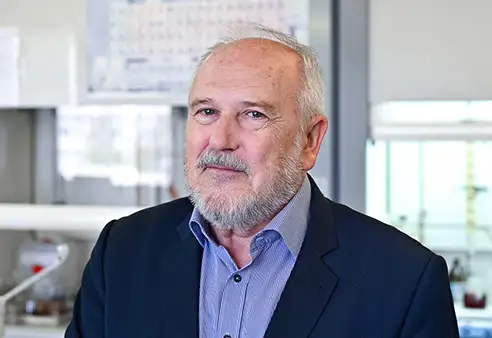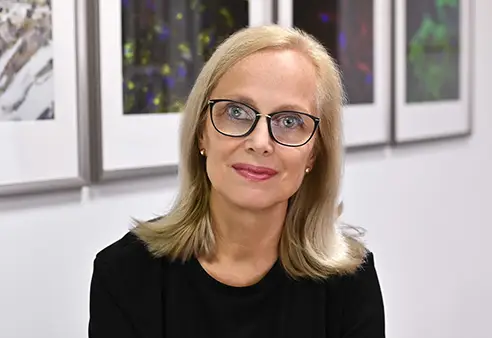"Based on history, we can predict what the future will look like," says paleontologist Mgr. Andrej Čerňanský, PhD., who works at the Faculty of Natural Sciences at Comenius University in Bratislava. His research focuses on the evolution and diversification of reptiles and paleoclimatic changes.
Andrej Čerňanský researches the evolution and diversification of vertebrates, especially reptiles, during the Mesozoic and Cenozoic eras – the period lasting from the extinction of non-avian dinosaurs 66 million years ago to today. He is interested in paleogeography, the reconstruction of geographical conditions in the Earth’s past, and paleoclimates and the changes that directly influenced the evolution of reptiles as cold-blooded animals.
He devotes most of his work to lizards. He says they are an ideal model organism for exploring evolution because of their wide diversity. There are miniature and 15-metre long, tree, serpent, underground, and even winged lizards. He studies fossils found in Europe but also in Africa, Asia and Australia. Fossils are studied using computed tomography. This is a non-invasive examination method that allows him to see the skeleton, look inside the skull, segment the desired structures and rotate the 3D image virtually. He then compares his findings from the study of fossils with the anatomy of today's reptiles. Based on the kinship detected through phylogenetic analyses and standard anatomical features, it is possible to reconstruct the evolution of a particular reptile line and show how it has adapted to changes in the environment.
Andrej Čerňanský says that by researching reptiles, it is possible to see how the climate has changed throughout history and to predict how the world will evolve further. He can also explain some medical mysteries. "The evolution of reptiles can also explain why some parts of the human body are formed as they are. Evolution only does what it's supposed to do. All you have on your body is a reflection of some ancient ancestors,” explains the scientist.
A paleontologist's work occurs not only at his or her desk but also in the field. Andrej Čerňanský also spends weeks at excavations. One of his most significant scientific discoveries in Slovakia is considered to be the first skeleton of a reptile from the Mesozoic era – the pachypleurosaur from Demänovská Dolina. Among all his discoveries, he is proudest of his research of a fossilised chameleon from Kenya, which he called Calumma benovskyi. He and his team refuted the thesis that chameleons originated in Madagascar – they discovered that they had instead spread eastwards from continental Africa due to the influence of sea currents. Based on the lizard Janosikia ulmensis from Germany, he brought an entirely new view of the evolutionary rule affecting changes in body size on islands. From the Mesozoic era, he and his colleagues described several exceptionally well-preserved fossils of reptiles and amphibians. They published the results in prestigious journals such as Science. He is also a co-author of a book on the world-famous Messel site (UNESCO), published in German and English.
Andrej Čerňanský has been fascinated by paleontology since childhood. When he was nine years old, in his hometown of Topoľčany, he tried to do his first excavations along the Nitra River and looked for fossils. "I have always liked humanly unattainable worlds. Prehistoric animals existed on Earth, which looked completely different from ours. It was like another planet – especially as you go deeper into the past." Andrej Čerňanský studied paleontology in Bratislava. He also gained several years of work experience in Germany – in Frankfurt am Main and Berlin. After returning home, he settled at the Faculty of Natural Sciences at Comenius University.
In his free time, Andrej Čerňanský dedicates himself to composing music. He plays bass in a band, and spends time with his family and daughter.


